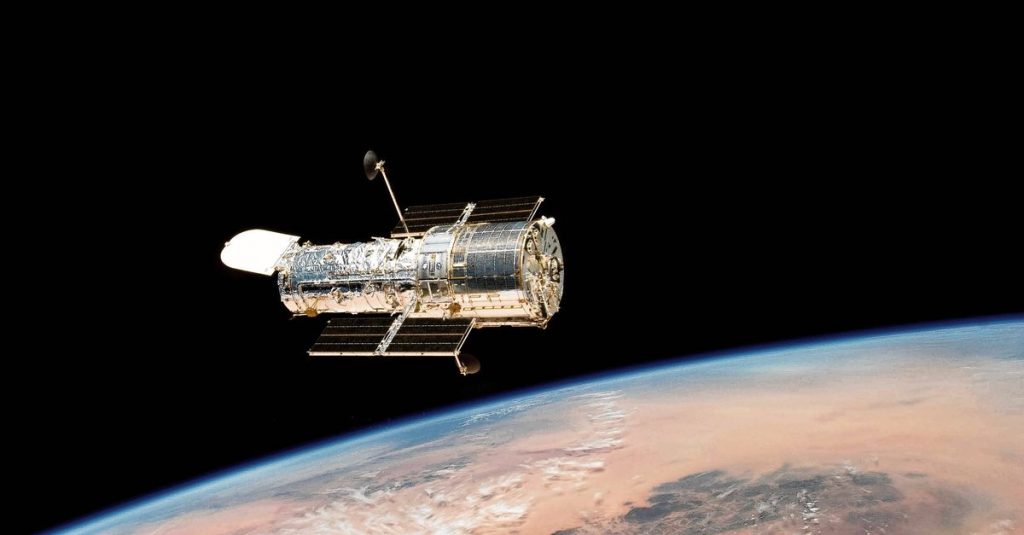Hubble can go forward again. The space telescope has been struggling for over a month. The onboard computer has crashed, so Hubble can no longer make observations. The power control unit (PCU), the component that ensures onboard computer hardware components get the correct amount of power, was the culprit – analyzes from Earth showed. Last weekend, we were able to switch to onboard backup devices, including PCU backups.
“This is very good and smart news,” Vincent Ecke says. He is Professor of Theoretical Astronomy at Leiden University. “It’s about 80s gear that you have to control and program from a distance. One thing is wrong and you are Jack.”
In 1990, astronauts launched a telescope the size of a city bus into orbit 540 kilometers above Earth. There, Earth’s atmosphere does not obstruct its view of the universe and can take pictures in a wide range of wavelengths: from near ultraviolet to near infrared.
Geriatrics أمراض
The expedition was originally supposed to last until about 2015. With five maintenance visits by astronauts, life expectancy has gradually increased, but such maintenance visits are no longer possible. The space shuttle that brought astronauts to Hubble was out of service about a decade ago.
hard because Hubble increasingly shows age-related diseases It must now be dissolved from the ground. Many parts wear out and the telescope regularly suffers from computer problems. In March, for example, Hubble was offline for the weekend due to a software problem. In October 2018, there was a problem with one of the gyroscopes, a system that controls the direction of the telescope.
On June 13, the on-board computer, the device that monitors and controls the onboard scientific instruments, stopped working. As a result, these tools automatically switched to Safe Mode. They were unharmed as a result, but astronomers could no longer use it without an onboard computer.
At first, an old memory stick seemed to be the cause of the on-board computer problem. On June 14, technicians turned the chip on and off – to no avail. They tried switching to multiple chip backups, but that didn’t solve the problem either.
Also read this article: The Hubble telescope has brought the universe back to humans
upstream
“Switching to a backup system should always be done with extreme caution,” says Henk Hoekstra, professor of astronomy at the Leiden Observatory. “You don’t want to accidentally shut down the entire system, because nothing is possible after that. By turning the parts off first and then turning them on again, and seeing if the behavior matches expectations, it is possible to localize the problem more or less.”
The analyzes that followed showed that something larger was going on upstream: with power control unit (PCU).
This component provides a constant supply of voltage to the onboard computers. A secondary protection circuit, part of the PCU, monitors voltage levels. If the voltage drops below or exceeds permissible levels, this component tells the on-board computer to stop. Analyzes showed either that the voltage level was outside acceptable levels or the secondary protection circuit was worn out and stuck in this off condition.
Last weekend, technicians fixed the issue with the PCU. They first tried resetting the PCU with ground commands, but to no avail. Then they switched to the whole unit backup, where the PCU backup is also located. This was successful last Friday and a day later the technicians put the scientific instruments back in place state of alert; Hubble can continue to collect data again.
“I expect Hubble to last for a few more years,” answers Andrew Levan, professor of astronomy at Radboud University. „There are many backup tools on board and technicians prove time and time again that they can solve software and hardware problems from the ground up. But I don’t expect Hubble to last another 30 years. One day there will be a problem that we cannot solve.”
different light
Work is underway on new space telescopes, but they work differently from the Hubble telescopes. NASA’s James Webb Space Telescope, which is expected to launch at the end of this year, is taking images in a different light than Hubble: in infrared light. The telescope will not orbit the Earth like Hubble, but around the Sun at a distance of 1.5 million km from Earth, at the so-called Lagrange point. At this point, it remains aligned with the Earth as it moves around the Sun.
Other new space telescopes, the Roman Nancy Grace Space Telescope of NASA and the European Space Agency Euclid They were developed primarily to answer questions about dark energy and dark matter, the mysterious things that make up 95% of the universe.
Also read this article: Hubble takes a picture of a giant spiral galaxy
A version of this article also appeared in NRC on the morning of July 20, 2021

“Coffee buff. Twitter fanatic. Tv practitioner. Social media advocate. Pop culture ninja.”













More Stories
Which can cause an increase in nitrogen.
The Central State Real Estate Agency has no additional space to accommodate Ukrainians.
The oystercatcher, the “unlucky national bird,” is increasingly breeding on rooftops.